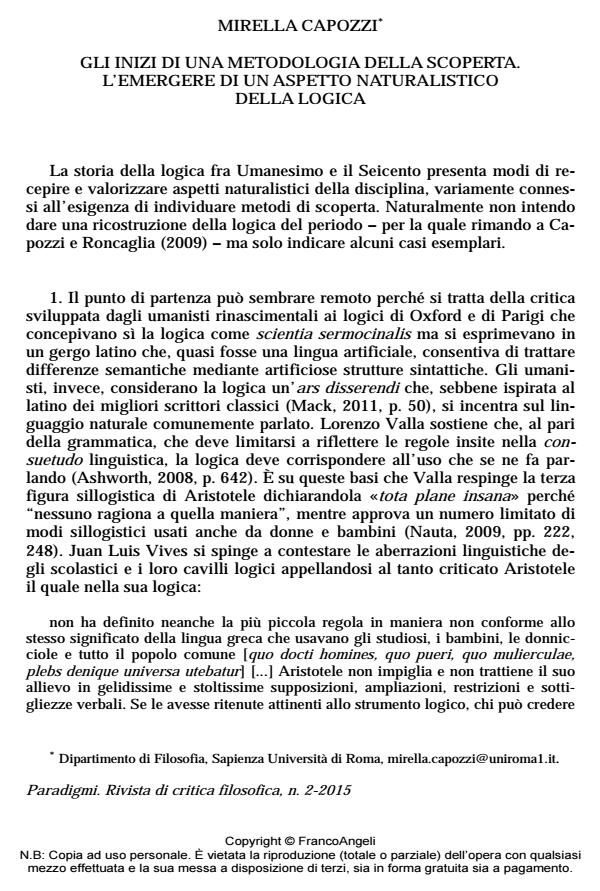Gli inizi di una metodologia della scoperta. L’emergere di un aspetto naturalistico della logica
Titolo Rivista PARADIGMI
Autori/Curatori Mirella Capozzi
Anno di pubblicazione 2015 Fascicolo 2015/2
Lingua Italiano Numero pagine 15 P. 45-59 Dimensione file 83 KB
DOI 10.3280/PARA2015-002005
Il DOI è il codice a barre della proprietà intellettuale: per saperne di più
clicca qui
Qui sotto puoi vedere in anteprima la prima pagina di questo articolo.
Se questo articolo ti interessa, lo puoi acquistare (e scaricare in formato pdf) seguendo le facili indicazioni per acquistare il download credit. Acquista Download Credits per scaricare questo Articolo in formato PDF

FrancoAngeli è membro della Publishers International Linking Association, Inc (PILA)associazione indipendente e non profit per facilitare (attraverso i servizi tecnologici implementati da CrossRef.org) l’accesso degli studiosi ai contenuti digitali nelle pubblicazioni professionali e scientifiche
Tra il XVI e il XVII secolo, l’accento posto dai logici rinascimentali sulla logica e sul linguaggio naturali, l’indagine di Descartes sulle fonti cognitive della certezza delle inferenze e l’insistenza di Locke sulla connessione tra la logica e il funzionamento della mente, furono sovente motivati dall’inadeguatezza del sillogismo come strumento di scoperta. Anche Leibniz e, più tardi, Lambert - entrambi mettendo a frutto il contributo cognitivo della sensibilità nell’operare con i segni dei loro calcoli logici - promossero metodi euristici che, in parte ispirandosi a Bacone, utilizzavano strumenti mnemonici/inventivi, come i topoi, che in precedenza erano stati concepiti per gli argomenti persuasivi adatti all’ambito della probabilità retorica. Ciò non era inteso come un ripiegare su una logica naturale ingenua, ma come la promozione di una logica naturalizzata attenta al modo in cui gli esseri umani pensano, e capace di correre il rischio dell’errore.
Parole chiave:Agricola, Cartesio, euristica, Lambert, Leibniz, Locke, naturalità della logica.
Mirella Capozzi, Gli inizi di una metodologia della scoperta. L’emergere di un aspetto naturalistico della logica in "PARADIGMI" 2/2015, pp 45-59, DOI: 10.3280/PARA2015-002005